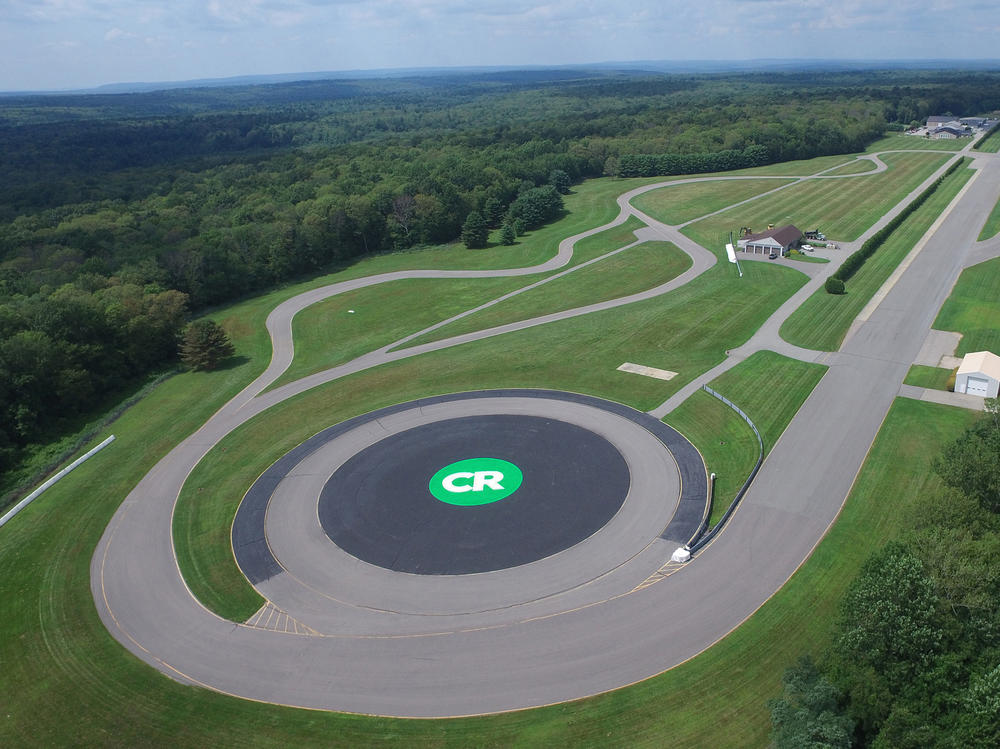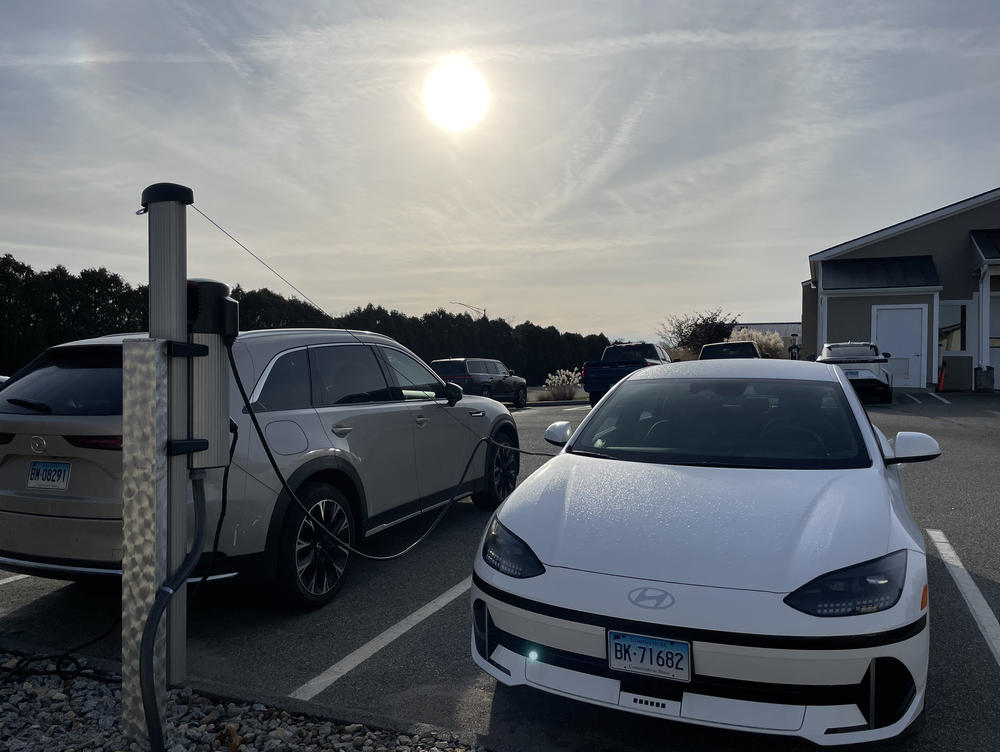Section Branding
Header Content
As the auto industry pivots to EVs, product tester Consumer Reports learns to adjust
Primary Content
On a stretch of painstakingly maintained asphalt in rural Connecticut, Ryan Pszczolkowski lined up a Rivian electric pickup truck at the start of a long straightaway. After a beat, he floored it.
The truck leaped forward, the motor nearly silent and the squeal of the tires very loud. Pszczolkowski glanced in the rearview mirror.
"If you look in the mirror, you can actually see rubber on the track," he said. "Just taking off like that, scrubbing it off. It's unbelievable."
Pszczolkowski is the tire guy at Consumer Reports, the nonprofit organization that's been evaluating new cars since 1936. He thinks a lot about rubber. And lately, he's had to think a bit more about electric vehicles, like the Rivian.
Everyone at Consumer Reports has. The world is trying to switch away from fossil fuels to fight climate change. And as the auto industry shifts toward battery-powered vehicles — with more than 70 new EVs launching in the next two years — the product testers have to shift gears, too.
At the Consumer Reports auto-testing facility — a former racetrack that's been heavily modified to add new turns and equipment — staff can test acceleration, braking and handling away from public streets. On a lap, Pszczolkowski points out how the big, heavy battery at the bottom of the Rivian gives it better handling around turns, but all that weight is hard on the vehicle's tires.
Consumer Reports buys dozens of cars a year (undercover, to avoid special treatment) before testing them on the track and public roads. As the nonprofit adds more and more electric vehicles, it's had to update some of its tests and ratings.
How testing EVs is different
"We really were testing EVs in a very similar way to regular cars, which is fine. But ultimately, we were leaving a lot of things on the table," says Alex Knizek, the manager of automotive testing and insights. "There's a lot of unique aspects of EVs that by doing that, we weren't necessarily capturing."
So now Consumer Reports evaluates things like how easy it is to plug and unplug a vehicle, how well an in-vehicle app works to direct you to a charger — and, of course, how long a vehicle can actually drive on a single charge.
For that rating, Knizek explains, a tester takes a vehicle out on the highway, sets the cruise control at 70 mph and just ... goes. For hours.
"We drive that car from full all the way to empty," he says. "I mean, tow-the-car-back-to-the-track empty."
In those tests, some cars overdelivered on their EPA-estimated range. Others fell short.
Cataloguing car owners' problems with EVs
In addition to testing vehicles, Consumer Reports also surveys its subscribers about their experiences owning vehicles, and how many problems they've encountered. Jake Fisher, who runs Consumer Reports' auto-testing program, says those surveys indicate today's EVs have 79% more problems than gas-powered cars.
The problems vary. For established automakers like General Motors, it tends to be electric stuff — the motors, the batteries, or the software to control them. Which makes sense, Fisher says: Imagine if the auto industry had been making electric cars for a century and then suddenly decided to start building gas-powered ones.
"I will guarantee you that it would be riddled with problems because all that technology is new," he says.
Meanwhile, newer automakers, like Rivian and Lucid, were electric from Day 1. But they struggle with basic car-making stuff: Do the door handles work right, do seals actually seal?
Fisher describes these problems as growing pains. He points to Tesla, which had the same kinds of problems in its first few years of mass production — but has improved substantially.
"It's going to get worked out," Fisher says.
In fact, long-term he expects EVs to be more reliable than conventional vehicles, because they have fewer moving parts. And he sees a lot to love in the EVs on the market today — even aside from the fact that their lower emissions make them a key part of the fight against climate change.
"They're unbelievably fast. They're unbelievably quiet. They're just effortless in terms of how they drive," he says.
Outside where we spoke, cones marked off a stretch of the parking lot where Consumer Reports was installing more EV chargers. They already had plugs for more than a dozen cars, but they were all full, and the organization had more EVs on the way next year.
It's a reminder that while the cars might handle effortlessly, it takes a lot of effort — from new chargers to new tests — to keep up with the auto industry's dramatic pivot toward EVs.
Copyright 2024 NPR. To see more, visit https://www.npr.org.


